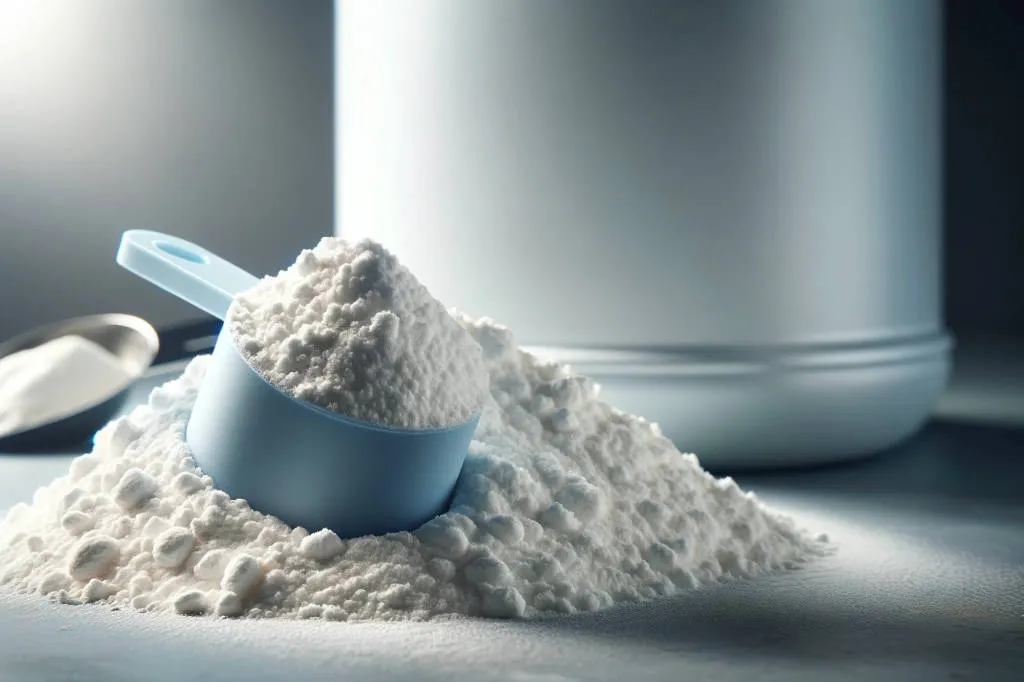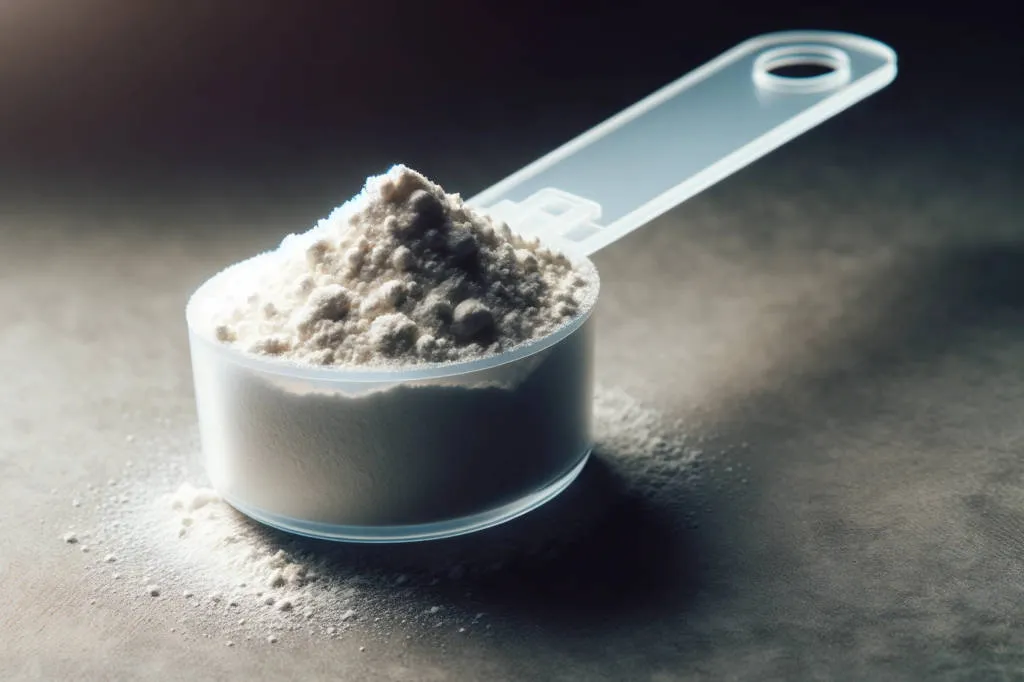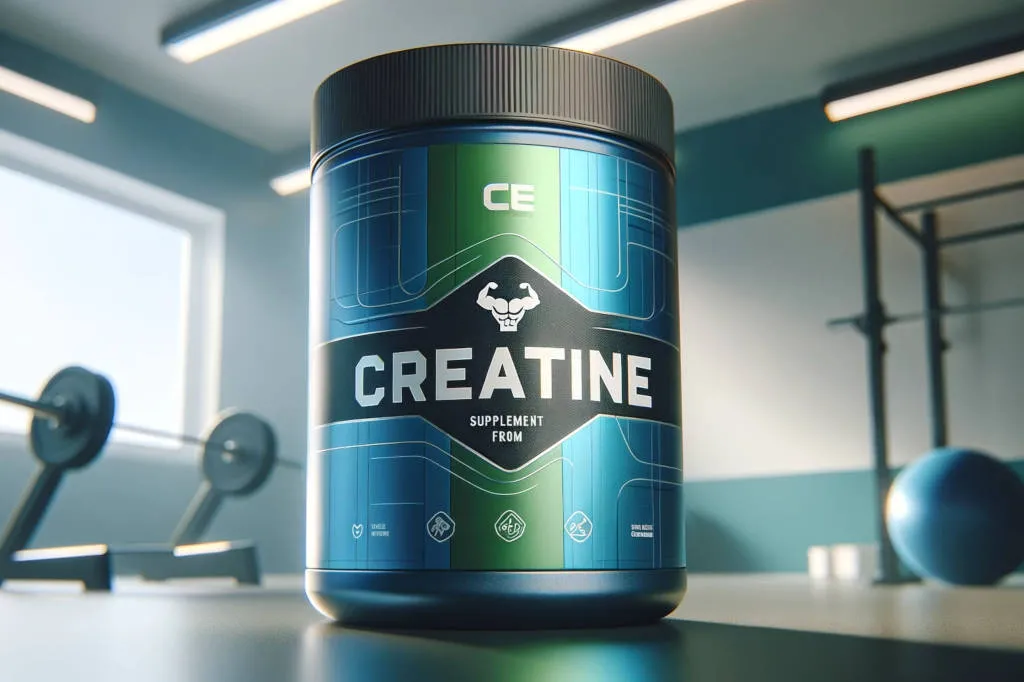The debate around the “before and after creatine” effects has been a focal point for fitness enthusiasts, athletes, and researchers alike. Creatine, one of the most popular and researched supplements in the fitness world, promises transformative results. But what lies beneath the surface? Beyond the muscular gains and photographic transformations, there’s a science and rationale that many are eager to understand. In this comprehensive guide, we’ll delve deep into the world of creatine, exploring its origins, benefits, potential side effects, and everything in between. Whether you’re a novice to the world of supplements or a seasoned athlete considering creatine, this post is your one-stop resource.
Table of Contents
What is Creatine?
Before diving into the transformative effects of creatine and examining the “before and after creatine” scenarios, it’s essential to first understand what creatine is.
Creatine is a naturally occurring compound found in small amounts in certain foods and produced within our bodies, primarily in the liver, kidneys, and pancreas. It is made up of three amino acids: arginine, glycine, and methionine. Stored mainly in the muscles, creatine serves as a quick energy source during short bursts of high-intensity activities like weightlifting or sprinting.
Furthermore, creatine is popularly known as a performance-enhancing supplement. Athletes and fitness enthusiasts commonly use it to increase muscle mass, improve exercise performance, and expedite recovery. When consumed, it increases the body’s ability to produce energy rapidly, which can lead to enhanced power and performance during high-intensity workouts.
Now, you may wonder, with its natural occurrence in the body and certain foods, why is there a need for supplementation? The answer lies in the enhanced benefits that higher, concentrated doses can offer, especially for athletes or individuals with specific fitness goals.
Why Do People Take Creatine Supplements?
When it comes to fitness supplements, creatine stands out as one of the most researched and widely accepted. But what drives individuals to incorporate creatine into their fitness journey? Let’s delve into the primary reasons:

- Muscle Mass Increase: Creatine has been linked to an increase in muscle cell volume, leading to bigger and fuller muscles. This is achieved through the water retention in the muscles and the promotion of protein synthesis.
- Improved Exercise Performance: Creatine serves as a rapid energy source, helping replenish ATP (adenosine triphosphate), the primary energy currency of the cell. This allows for enhanced performance during short bursts of high-intensity activities like weightlifting, sprinting, or jumping.
- Faster Recovery: By replenishing ATP stores quickly and increasing the availability of instant energy, creatine can help reduce muscle cell damage and inflammation, promoting faster post-workout recovery.
- Brain Health: Emerging research suggests creatine might support brain health. It may assist in providing energy to the brain, potentially improving cognitive functions, especially under conditions of strain or sleep deprivation.
- Suitable for Vegetarians and Vegans: Those who abstain from meat, a natural source of creatine, might have lower creatine levels. Supplements can be an excellent way for vegetarians and vegans to ensure they’re getting enough.
- Economic and Efficient: Compared to many other supplements in the market, creatine is relatively inexpensive. Plus, its efficacy has been backed by numerous scientific studies, making it a trusted choice for many.
The decision to take creatine supplements often stems from a combination of these benefits. Whether someone is looking to bulk up, enhance performance, or simply ensure they’re getting adequate creatine levels, supplementation can offer a convenient solution.
Before Taking Creatine: Baseline
Understanding one’s baseline before diving into any supplementation is crucial. For those contemplating adding creatine into their regimen, it’s essential to get a clear picture of their “before” status. So, what exactly should one look out for?

- Natural Creatine Levels: Our bodies naturally produce creatine, primarily in the liver, kidneys, and pancreas. It’s then stored in muscles and used as energy. Before starting on a supplement, it’s beneficial to recognize one’s inherent levels. While testing isn’t routinely done, some athletes opt for it to tailor their intake better.
- Dietary Intake: Creatine is also found in some foods, predominantly in red meat and fish. Assessing one’s regular dietary intake can provide insight into how much creatine they’re already getting.
- Training Routine and Fitness Level: It’s pivotal to document current strength, endurance, and workout frequency. This provides a tangible metric to compare any improvements after starting creatine supplementation.
- Body Composition: Recording metrics like muscle mass, body fat percentage, and water retention will be valuable. These metrics can change after starting creatine, and having a starting point can help measure its impact.
- Personal Goals: Whether it’s muscle gain, enhanced performance, or improved recovery, clearly defining what one hopes to achieve with creatine supplementation will help gauge its effectiveness.
- Overall Health: Before beginning any supplement, a general health check-up is advised. Ensure kidney and liver functions are optimal, as these organs play roles in creatine metabolism.
The “before” phase is all about setting the stage, gathering data, and understanding one’s starting point. This baseline information will be instrumental when comparing the before and after effects, ensuring that any changes observed can be attributed to the supplement.
By establishing a solid baseline, individuals are better positioned to observe and appreciate the transformative power of creatine supplementation in their fitness journey.
The Science Behind Creatine
To truly appreciate the impact of creatine, delving into the science of how creatine functions in the body is essential. While it’s commonly known as a popular supplement, many may not fully grasp its biological role and how it influences athletic performance.

- Creatine’s Role in Energy Production: At its core, creatine plays a vital role in the production of ATP (Adenosine Triphosphate) – our body’s primary energy currency. When muscles contract during short, explosive activities, they rely on ATP. Creatine phosphate donates a phosphate group to produce ATP rapidly, enabling muscles to keep working at high intensity.
- Creatine Storage: Around 95% of the body’s creatine is stored in skeletal muscles. When supplemented, the muscles saturate with more creatine, ensuring that they have a readily available pool to tap into during high-intensity workouts.
- Water Retention: Creatine has been known to increase water content within muscle cells. This process can lead to muscles appearing fuller and can also enhance protein synthesis.
- Neuroprotective Properties: Recent research suggests that creatine may have protective effects on the brain and might be beneficial in conditions characterized by a decrease in ATP production.
- Enhancing Muscle Recovery: Creatine can potentially reduce cell damage and inflammation following exhaustive exercise, leading to quicker recovery times.
- Lactate Threshold: Creatine supplementation might increase the lactate threshold, the point at which lactic acid starts accumulating in muscles, leading to fatigue. A higher threshold means longer, more sustained high-intensity performance.
To reap the benefits of creatine fully, understanding its functioning and the science behind it can be a game-changer. Knowing how it works provides clarity on why and when to use it for optimal results.
In essence, the science behind creatine underscores its immense value in energy production, muscle recovery, and overall athletic enhancement. Whether you’re an elite athlete or a casual gym-goer, grasping this science can inform and enhance your supplementation strategy.
Benefits of Creatine Supplementation
The “before and after creatine” narrative is not just about visible muscle growth; the benefits of creatine supplementation span various physiological and performance-enhancing aspects. Let’s dive into the manifold benefits that make creatine one of the most popular and researched supplements in the fitness world.

- Enhanced Physical Performance: Creatine’s primary claim to fame is its ability to boost short-term, high-intensity performance. This makes it particularly beneficial for activities like weightlifting, sprinting, or any sport that involves short bursts of all-out effort.
- Muscle Growth: Creatine is renowned for its muscle volumizing effect. By increasing the water content within muscle cells and stimulating protein synthesis, creatine can contribute to noticeable muscle size growth over time.
- Improved Recovery: Athletes often report reduced muscle soreness and quicker recovery times when supplementing with creatine. This enables more frequent training sessions, potentially accelerating progress.
- Brain Health: Beyond muscles, creatine has shown promise in supporting brain health. It might help with neurodegenerative diseases by ensuring energy production and reducing oxidative stress in the brain.
- Anti-aging Properties: There’s evidence to suggest that creatine can reduce age-related muscle loss, making it a valuable supplement for those looking to maintain strength and muscle mass as they age.
- Bone Health: Preliminary research hints at creatine’s potential to support bone health, especially when combined with resistance training.
- Reduced Fatigue: During extended workouts, creatine can help delay the onset of fatigue, enabling athletes to push harder for longer.
It’s clear that the benefits of creatine supplementation extend far beyond just muscle growth. It offers a holistic approach to wellness, enhancing both physical performance and certain aspects of cognitive function.
With its vast array of benefits, it’s no wonder creatine has secured its spot as a staple in the supplement regimens of many athletes and fitness enthusiasts. Whether aiming for enhanced physical prowess or better brain and bone health, creatine delivers on multiple fronts.
Physical Changes: Before and After Creatine
The allure of creatine is predominantly rooted in its potential to catalyze visible physical changes. When you look at “before and after creatine” images, the transformation can often be striking. But what exactly happens to the body when someone begins supplementing with creatine? Let’s break down the evident physical changes one might observe:

- Increased Muscle Fullness: Shortly after starting creatine supplementation, many users report a distinct fullness in their muscles. This is due to creatine’s ability to increase water content within muscle cells, giving them a more volumized appearance.
- Enhanced Muscle Definition: As creatine aids in the elevation of phosphocreatine stores in muscles, users might notice a more defined musculature. This is particularly evident when combined with a consistent resistance training routine.
- Weight Gain: Due to the water retention in muscles, it’s common to experience a slight weight gain after starting creatine supplementation. This isn’t fat gain; it’s primarily water and, over time, increased muscle mass.
- Greater Pump During Workouts: The enhanced muscle hydration, coupled with improved performance, often translates to a more pronounced muscle ‘pump’ during workouts. This is the tight feeling in muscles after intensive exercises, making them appear larger and more vascular.
- Visible Strength Gains: While not a ‘visual’ change in the traditional sense, the ability to lift heavier weights or perform more repetitions is a tangible representation of the strength gains attributed to creatine supplementation.
Documenting one’s journey is an excellent way for users to visually track their progress and the supplement’s impact. While individual results can vary based on factors like genetics, diet, and workout regimen, creatine generally provides a noticeable boost in physical appearance and strength for most users.
Photographic Evidence
In today’s digital age, nothing speaks louder than images. When we discuss the impact of creatine, the photographic evidence can be particularly compelling. These snapshots offer visual testimonies of the transformative power of this supplement. However, it’s essential to approach such evidence with a discerning eye. Here’s why:

- Genuine Transformation: Authentic photographs will depict noticeable changes in muscle fullness and definition. Especially when paired with consistent training, the effects of creatine supplementation can indeed be profound.
- Consistency in Lighting and Pose: When examining any before and after photos, pay attention to the lighting and pose. Consistency in these elements ensures that the changes you observe are genuine and not just a result of shifting shadows or a more flattering stance.
- Avoiding Misleading Images: Beware of images where the “after” photo is taken immediately after a workout. Muscles can appear significantly more pronounced post-exercise due to the temporary pump, which might exaggerate the effects of creatine.
- Long-Term Evidence: While the most notable changes with creatine supplementation often occur in the initial weeks, looking at long-term photographic evidence can provide insights into sustained benefits and muscle growth over time.
While photographic evidence can be incredibly motivating and illuminating, it’s crucial to approach such images critically. Genuine transformations are awe-inspiring, but always be wary of potential alterations or situations set up to exaggerate results. When considering creatine supplementation, it’s best to rely on a combination of scientific research, personal testimonials, and authentic photographic evidence to make informed decisions.
The Creatine Loading Phase
The creatine loading phase is a popular strategy among athletes and fitness enthusiasts to maximize creatine stores in the muscles rapidly. But what exactly is this phase, and how does it work? Let’s delve deeper into the “before and after creatine” loading phase to understand its significance.

- What is the Loading Phase?: The creatine loading phase involves consuming higher amounts of creatine for a short period, typically 5-7 days, followed by a maintenance phase with reduced intake. This approach aims to saturate the muscles with creatine more quickly than with standard dosing.
- Dosage: During the loading phase, the recommended dosage is around 20 grams of creatine per day, usually divided into 4 doses of 5 grams each. After the initial week, the dosage is often reduced to 3-5 grams daily for maintenance.
- Why Load Creatine?: The primary objective of this phase is to fill the muscles’ creatine phosphate stores as quickly as possible. By doing this, individuals might experience the benefits of creatine supplementation sooner, like increased strength and endurance.
- Benefits Post Loading: After the loading phase, many users report noticeable differences in their workout performance, muscle volume, and recovery rate. The differences seen in loading can be significant for some individuals.
- Is Loading Necessary?: Not everyone needs to undergo a loading phase. While it allows quicker saturation, taking a consistent lower dose (3-5 grams daily) will also saturate the muscles with creatine, albeit over a more extended period.
In conclusion, the creatine loading phase is a method to fast-track the muscle saturation of creatine. Whether you choose to load or take a steady dose depends on personal preference and individual goals. Always remember to consult with a healthcare professional or nutritionist when considering new supplementation routines.
Potential Side Effects and Considerations
Creatine, as one of the most researched supplements in the world, generally boasts a good safety profile. However, as with any supplement or dietary change, understanding potential side effects and necessary considerations is crucial for its safe use. Here’s a closer look at what to know about supplementation.

- Water Retention: One of the immediate effects of creatine supplementation can be increased water retention in the muscles. This may lead to a temporary weight gain and a fuller muscle appearance.
- Stomach Discomfort: Some individuals might experience stomach discomfort, diarrhea, or nausea, especially if taking larger doses during a loading phase. Spreading the dosage throughout the day or taking it with meals can alleviate these issues for some.
- Kidney and Liver Health: There’s a common myth that creatine can harm the kidneys or liver. While current research has shown no evidence of this in healthy individuals, those with pre-existing liver or kidney conditions should consult a physician before starting supplementation.
- Muscle Cramps: A few users report muscle cramps or strains when beginning creatine supplementation. Staying well-hydrated and ensuring proper electrolyte balance can help mitigate these concerns.
- Non-Responders: Not everyone may notice significant benefits from creatine supplementation. Genetic factors can influence how effectively someone’s muscles uptake and utilize creatine. These individuals are often termed “non-responders.”
- Purity and Quality: Not all creatine supplements are created equal. It’s vital to choose high-quality products that are free from contaminants. Look for those labeled as “Creapure” or other reputable brands to ensure purity. Also make sure to check the expiration date on the creatine when shopping.
Before starting any new supplement, it’s always a wise decision to be well-informed about potential side effects and considerations. Creatine has many benefits, but being aware of these factors ensures you get the most out of your supplementation journey while prioritizing health and safety.
Differences in Creatine Responses
As with many dietary supplements, the response to creatine can vary among individuals. While many tout the benefits they’ve gained from supplementation, it’s essential to remember that every person’s body is different. Let’s delve into the varied responses people experience using creatine.

- Genetic Factors: Genetic makeup can play a significant role in how an individual responds to creatine. Some genes can influence the efficiency of creatine transport into muscle cells. Those with certain genetic profiles might benefit more from creatine supplementation than others.
- Dietary Habits: Vegetarians and vegans often see a more noticeable response to creatine supplementation compared to meat-eaters. This is because creatine is naturally found in animal products, so those who avoid these foods might have lower baseline creatine levels.
- Training Status: Seasoned athletes and those who have been training for a long time might notice a subtler impact compared to someone just starting their fitness journey. The latter group might see more dramatic effects due to the synergistic impact of starting exercise and supplementation together.
- Age: Younger individuals, especially those in their late teens and early twenties, might experience more pronounced benefits from creatine, particularly in terms of muscle mass and strength gains. However, older adults can also benefit, especially concerning muscle preservation and cognitive function.
- Gender Differences: While both men and women can benefit from creatine supplementation, men might notice a slightly more significant increase in muscle size and strength. However, women often report increased endurance and better recovery.
- Type of Creatine: The market offers various creatine types, such as creatine monohydrate, creatine ethyl ester, and creatine hydrochloride, among others. Some individuals might respond better to one type over another based on absorption rates and stomach tolerance.
Understanding that everyone might respond differently to creatine is essential. It allows for realistic expectations and promotes the idea of personal experimentation to determine what works best for each individual’s unique biology and goals.
Combining Creatine with Other Supplements
One of the questions often arising in the fitness and supplementation world is about stacking – or combining – creatine with other supplements. While creatine is powerful on its own, many aim to amplify its effects by pairing it with other nutrients. But is this effective, and more importantly, is it safe? Let’s explore the effects when combined with various other popular supplements.

- Creatine and Protein: One of the most common combinations, many athletes and gym-goers take creatine alongside whey or plant-based protein. This combination can boost muscle recovery and growth. Taking creatine post-workout with a protein shake can maximize its absorption and effectiveness.
- Creatine and Beta-Alanine: Beta-Alanine is another supplement known for enhancing athletic performance. When combined with creatine, it can lead to even more significant improvements in endurance and muscle growth.
- Creatine and Caffeine: Some studies suggest that caffeine might counteract creatine’s effects on muscle hydration. However, this isn’t universally accepted, and many individuals combine the two, especially in pre-workout formulas. If choosing to mix these, monitor your body’s response carefully.
- Creatine and Branched-Chain Amino Acids (BCAAs): Combining BCAAs with creatine can be beneficial for muscle recovery and growth. BCAAs help reduce muscle soreness and improve protein synthesis, making them a good match with creatine’s muscle-enhancing properties.
- Creatine and Fish Oil: Omega-3 fatty acids in fish oil might improve the uptake of creatine into the muscles, making it more effective. Additionally, the anti-inflammatory properties of fish oil can assist with post-workout recovery.
In conclusion, while combining creatine with other supplements can amplify its benefits, it’s crucial to do your research and consult with a healthcare or nutritional professional. Everyone’s body is unique, and while some combinations might work wonders for some, they could be less effective or even counterproductive for others. Always prioritize safety and ensure that any mixture aligns with your health and fitness goals.
Tips for Those Considering Creatine
If you’re contemplating the “before and after ” journey, it’s essential to equip yourself with knowledge to maximize benefits and ensure safety. While creatine is one of the most researched and recognized supplements in the fitness industry, it’s crucial to use it effectively. Here are some key tips for those considering integrating creatine into their regimen.

- Start with Quality: Always opt for high-quality creatine monohydrate. It’s the most researched form of creatine and has shown the most consistent results. Avoid filler ingredients or flashy additives.
- Stay Hydrated: Creatine works by drawing water into the muscles, so it’s crucial to increase your water intake. This ensures that your muscles stay hydrated and reduces the risk of potential side effects like cramps.
- Consider Timing: While there’s debate about the best time to take creatine, many experts recommend post-workout for optimal absorption. Pairing it with a carbohydrate source can further improve its uptake.
- Consistent Dosage: Stick to the recommended dosage. Typically, 5 grams per day is standard for maintenance, but this can vary based on body weight and specific goals.
- Listen to Your Body: Monitor how your body reacts when you start taking creatine. While side effects are rare, it’s essential to be aware of any changes and adjust accordingly.
- Consult a Professional: Before starting any supplement, including creatine, it’s wise to consult with a healthcare professional or nutritionist to ensure it’s suitable for your specific needs.
- Cycle Creatine: Some users prefer to cycle creatine, meaning they’ll take it for a set period, followed by a break. While cycling isn’t strictly necessary, it can be a method to consider based on personal preferences.
- Dietary Considerations: Remember, supplements are an addition to a balanced diet. Ensure you’re also consuming a nutrient-rich diet to support your fitness goals and overall health.
Embarking on the journey can be transformative for your fitness goals. However, it’s paramount to approach it with an informed mindset. By following these tips, you can optimize the benefits of creatine while ensuring a safe and effective supplementation experience.
FAQ Section
The journey can be filled with questions, especially for those new to the supplement. Here are some frequently asked questions to provide clarity.

1. How long before I see results with creatine supplementation?
Most users report noticeable results within a few weeks of consistent usage. However, individual responses can vary. Some might experience immediate benefits during the loading phase, while others might notice gradual improvements.
2. Can I take creatine if I’m vegetarian or vegan?
Absolutely! While creatine is naturally found in meat and fish, synthetic creatine used in supplements is typically vegan-friendly. Always check the product label to be sure.
3. Do I need to cycle off creatine?
Cycling creatine is not strictly necessary. Many users take creatine continuously without adverse effects. However, some prefer cycling to give their body a break or to prevent any potential plateau in benefits.
4. Is weight gain normal after starting creatine?
Yes, it’s common to experience slight weight gain after starting creatine. This is often due to water retention in the muscles. It’s not typically fat gain but rather an increase in muscle hydration.
5. Can I mix creatine with other drinks like coffee or juice?
Yes, creatine can be mixed with various liquids. However, it’s best taken with a simple carbohydrate source to enhance its uptake. Also, be cautious when mixing with caffeinated drinks, as excessive caffeine can dehydrate the body.
6. Is creatine safe for long-term use?
Research has indicated that creatine is safe for long-term use in healthy individuals when consumed within recommended dosages. Always consult with a healthcare professional if unsure.
7. Will I lose my progress if I stop taking creatine?
When you stop taking creatine, you might notice a slight decrease in weight due to reduced water retention in the muscles. However, the actual muscle gains and strength you’ve achieved with the help of creatine will remain, as long as you continue your training and maintain a balanced diet.
Navigating the world of supplements can be confusing. We hope this FAQ section helps clear up some of the common queries. Always remember to consult with professionals when in doubt and prioritize your health and well-being.
Conclusion
Navigating the intricacies of creatine supplementation can feel like a journey. From understanding its origins and science to deciphering the myriad of benefits and considerations, it’s evident that creatine is more than just another supplement on the shelf. The transformative effects, both visually and internally, shed light on the “before and after creatine” experiences of countless fitness enthusiasts and athletes worldwide.
However, as with all health and fitness choices, individual responses and results may vary. While creatine has its fair share of success stories, it’s crucial to approach it with a well-informed mindset. Remember, supplements should complement a balanced lifestyle, not replace it.
Whether you’re considering taking creatine or simply wanted to delve deeper into its world, we hope this comprehensive guide provided clarity. Your health journey is uniquely yours—equip yourself with knowledge, consult with professionals, and always prioritize your well-being.
Further Reading
We’ve curated a list of sources that encompass a range of perspectives from the enhanced ergogenic effects of creatine in sports performance to its safety and efficacy in exercise and medicine. They provide a comprehensive view of how creatine supplementation can lead to significant improvements in short-duration, high-intensity exercises, and its role in muscle growth and recovery. This collection of studies will guide our exploration into the transformative power of creatine, ensuring our readers are well-informed with evidence-based insights.
- “Creatine for Exercise and Sports Performance, with Recovery Considerations for Healthy Populations” from PubMed. This study reviews the positive ergogenic effects of creatine supplementation on short-duration, high-intensity exercise activities and its role in enhancing exercise training adaptations.
- “Creatine Supplementation: An Update” also found on PubMed, discusses the increased lean muscle mass and exercise capacity benefits associated with creatine use, particularly in short-duration, high-intensity exercises.
- “International Society of Sports Nutrition Position Stand: Safety and Efficacy of Creatine Supplementation in Exercise, Sport, and Medicine” from the Journal of the International Society of Sports Nutrition. This paper provides a comprehensive view on the safety and effectiveness of creatine supplementation in sports and exercise contexts.
- “The Additive Effects of Creatine Supplementation and Exercise Training in an Aging Population: A Systematic Review of Randomized Controlled Trials” from the Journal of Geriatric Physical Therapy. This study systematically reviews the combined effects of creatine supplementation and exercise training, especially in older adults.
- “Multi-Ingredient Pre-Workout Supplements, Safety Implications, and Performance Outcomes: A Brief Review” from the Journal of the International Society of Sports Nutrition. This review includes creatine as part of a broader discussion on pre-workout supplements and their effects on performance and safety.
These references collectively offer a well-rounded understanding of creatine’s role in enhancing exercise performance, muscle growth, and recovery, as well as considerations for its safe and effective use.
Additionally, you’re invited to explore our collection of articles:





